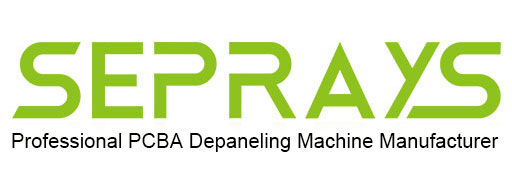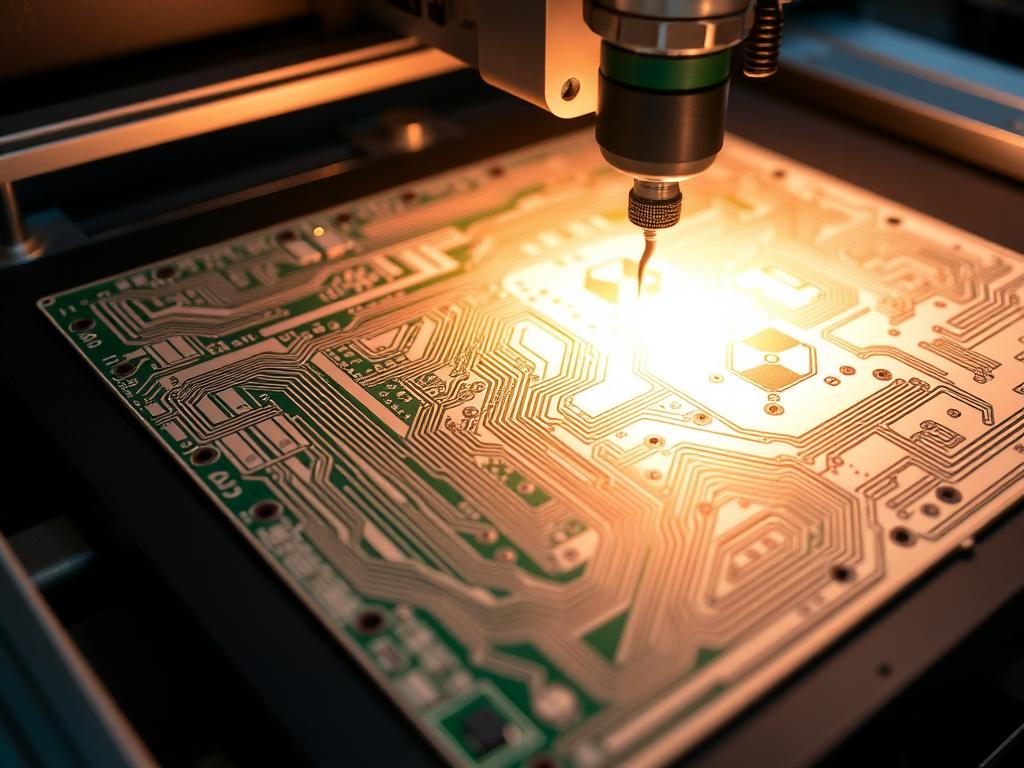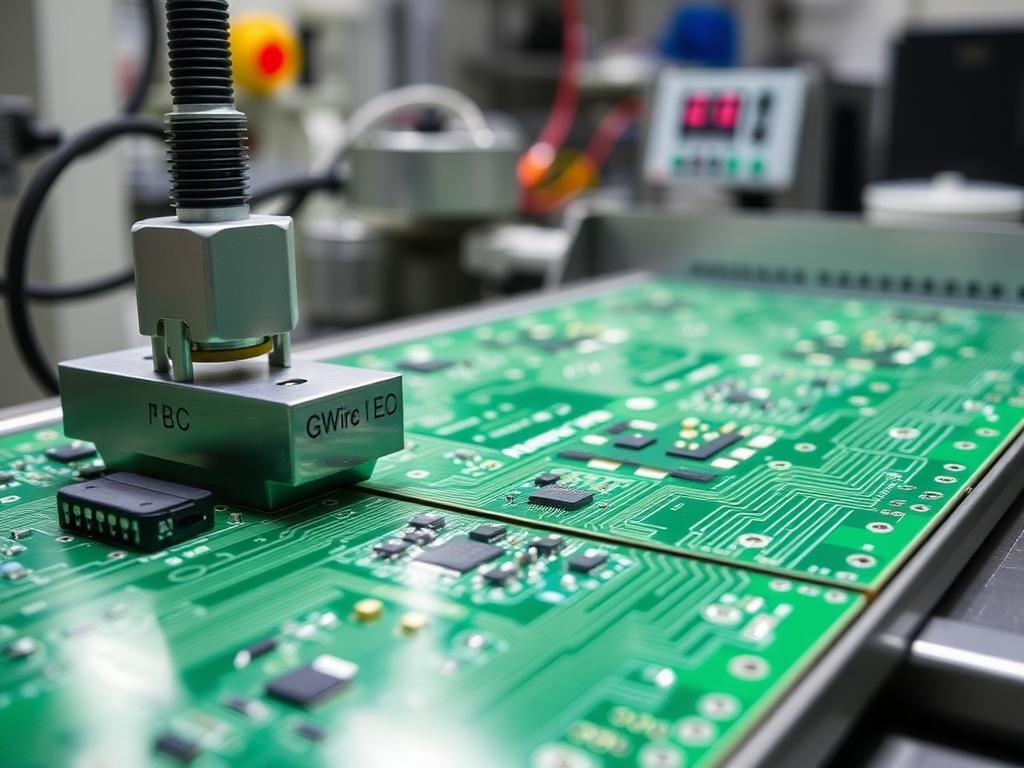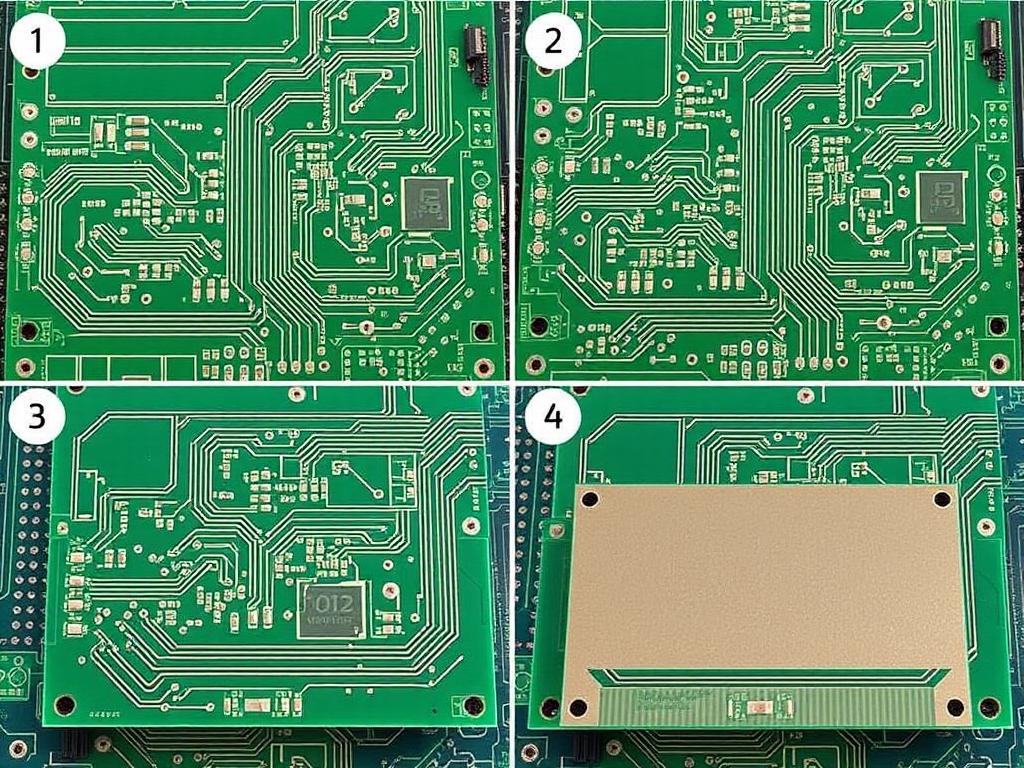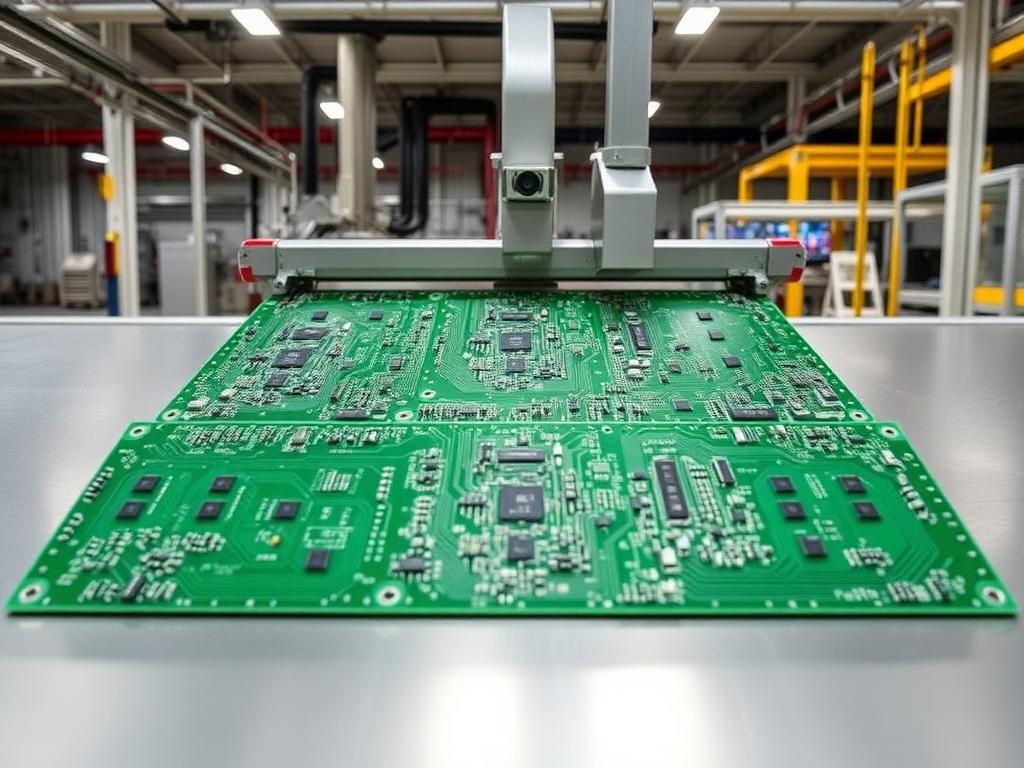![]()
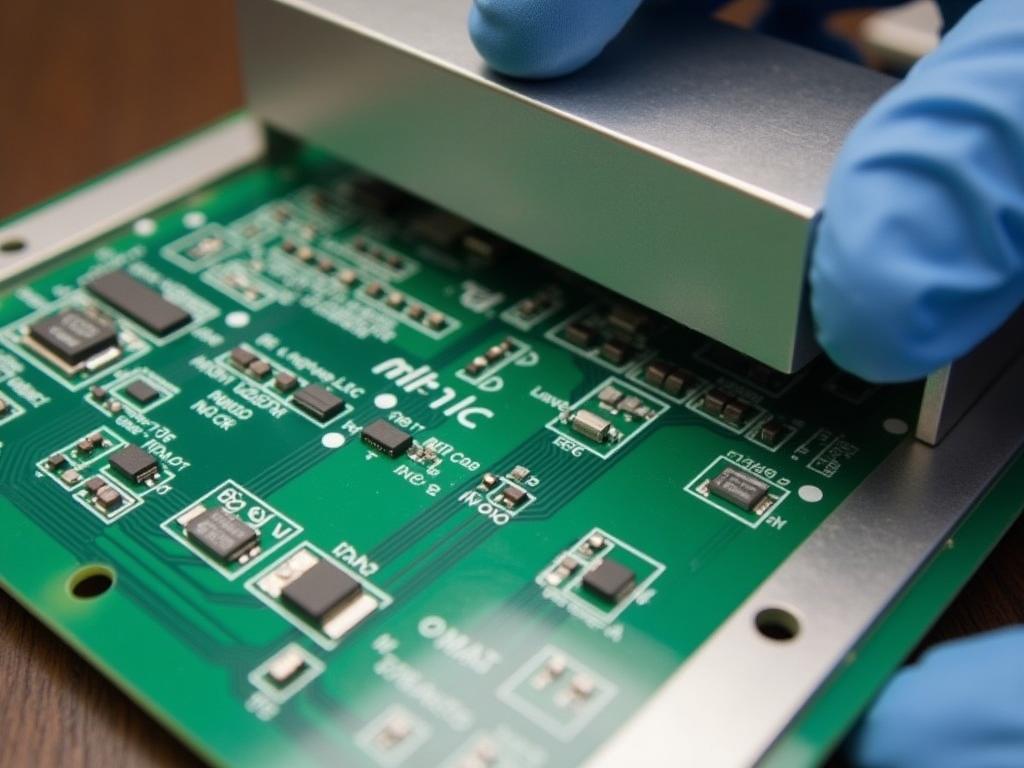
Safety precautions in PCB depaneling
PCB Depaneling: Mastering the Art of Separating Printed Circuit Boards
For over two decades, I’ve been deeply involved in the PCB industry, witnessing firsthand the evolution of PCB depaneling techniques. This article is a culmination of that experience, designed to guide electronic technology companies, large electronic product processing factories, and individual PCB enthusiasts through the crucial process of separating printed circuit boards (PCBs) from their manufacturing panels. We’ll explore everything from the fundamental rules for handling printed circuit boards to the latest in dépanelage au laser, ensuring that your PCB are treated with the care they deserve. Whether you’re dealing with standard FR-4 PCB or more complex flexible circuits, understanding the nuances of dépanelage is paramount to maintaining quality and minimizing losses. It’s a journey through best practices and innovative technologies, aiming to equip you with the knowledge to choose the perfect dépanelage method for your needs.
What is PCB Depaneling and Why is it Crucial?
The term “dépanelage” refers to the process of separating individual circuits imprimés à partir d'un panneau plus grand après le processus de fabrication. This step is absolutely critical in the production of electronics. When creating PCB, it’s far more efficient to manufacture several circuit boards at once on a single large panel. This process, called panélisation, allows for higher Débit and reduces waste. Once the board built using various layers of material is complete, the individual PCBs must be separated. This is where the art and science of dépanelage come in. Incorrect dépanelage can lead to a whole host of problems, such as cracked traces, damaged components, and even complete board failure. Dépanelage needs to be done with care and with the correct type of equipment. This is not just a simple processus de séparation, it’s a vital step that impacts the overall integrity and functionality of the final product.
The way you choose to perform dépanelage has a direct impact on the success of your products. Choosing the incorrect méthode de coupe can cause damage and result in a disappointing loss. Poor dépanelage can introduce contrainte mécanique and other forms of stress to sensitive areas, like composants électroniques, and can lead to functional failures. It’s not simply about cutting a carte de circuit imprimé apart; it’s about ensuring each individual pcb is perfectly usable when separated. The methods used for démontage de PCB are varied, with some being more suitable than others based on type of pcb, materials, and precision needs. Thus, understanding the options and choosing the right one for your needs is a step every manufacturing team must take with greatest of care.
Why is Proper Handling of Printed Circuit Boards So Important?
As someone who has spent two decades in this field, I’ve seen the results of mishandling countless times. Printed circuit boards are delicate and must be handled avec the greatest of care. They are full of sensitive electronic components that are easily damaged. A pcb can fracture with just a bit of too much bending or twisting, so it needs to be treated as the critical piece of equipment that it is. A cracked trace or a damaged capacitor can render a circuit board goes from being functional to being scrap with just a moment of carelessness. This isn’t just about cause damage to the actual carte de circuit imprimé, but also about the risk of contamination and electrostatic damage.
Proper handling is not just about avoiding physical damage. It’s also about preventing the introduction of contaminant, and making sure that electrostatic discharge (ESD) is kept to a minimum. Imagine your circuits imprimés as a finely tuned machine: if something gets out of place or too much pressure is put on a specific part, the entire thing falls apart. It is paramount that appropriate protective clothing like wrist straps connected to ground are worn at all times, and that we follow the rules for handling printed circuit boards. Many times there is a lot of handling involved in the processus de dépanélisation and the pick-and-place and general SMT areas of the production process. These steps are crucial in ensuring that your circuits imprimés go from being built to being ready for their intended use.
What are the Key Design Rules for PCB Panelization?
Efficace panel design is absolutely crucial for successful dépanelage. The way a panel is created significantly impacts how easily the PCB individuels can be separated. One of the first things to consider is the size of the panel, the number of circuits imprimés per panel, et le material thicknesses. You have to take into account the size of your carte de circuit imprimé, and the size of the machines that you are using.
When you think about conception de circuits imprimés pour panélisation, it’s not only about how many circuits imprimés you can fit, it’s about maximizing utilization of the panel, while making sure it is still easy to perform the processus de coupe without cause damage. The spacing between circuits imprimés, le width of the cutting channel, the location of fiducial marks, and the placement of tooling holes are also vital considerations. You want to ensure you have enough free areas for handling and that there are no components close to the edges that might be damaged during separation. Remember, panel design influences not only the processus de dépanélisation but also the efficiency of the pick-and-place operations. The better the panel design, the less contrainte mécanique there will be and more consistent the end result.
What Depaneling Methods are Available?
Il y a plusieurs méthodes de dépanélisation, and each method has its advantages and disadvantages. The method you choose should be based on the type of pcb you’re using, the volume of production, the precision requirements, and the budget that you have. Here are some common dépanelage approaches:
- Router Depaneling: A mechanical method using a high-speed spindle to cut through the material.
- Dépaneillage au laser : Utilizes a focused laser beam to cut through the material.
- Dépanneaux à rainure en V : Uses a v-scoring or coupe en V method, where grooves are pre-scored before the boards are broken apart.
- Punching Depaneling: A method using a die to punch out the individual circuits imprimés.
Each of these méthodes de dépanélisation has a different approach, and that leads to different outcomes. Understanding these methods is the key to choosing the best way to separate your circuits imprimés.
How Does Router Depaneling Work and When Should You Choose it?
Router depaneling est un widespread method that uses a high-speed rotary cutter, or routeur, to separate PCB individuels from the panel. This method is versatile and can be used on a wide variety of carte de circuit imprimé materials and thicknesses. The routeur moves along a pre-programmed path, essentially milling away the substrat and separating the boards.
The benefits of router depaneling include its ability to handle complex shapes, to create a clean edge with less contrainte mécanique than other methods, and its flexibility when it comes to complex contours. However, router depaneling does create dust and debris, requiring a thorough cleaning process after separation, which impacts technical cleanliness. Ce méthode de coupe is ideal for moderate to high-volume carte de circuit imprimé production runs where a clean edge and precise cuts are required. It is also a great option for circuits imprimés that have composants sensibles close to the edge, as long as the appropriate settings are used. We are known as a leading manufacturer of Machine de routeur de carte PCB, and we are confident in our products.
What is Laser Depaneling and When is it the Best Option?
Dépaneillage au laser is a non-contact method that uses a faisceau laser focalisé to cut through the material, offering unparalleled precision and minimal mechanical or thermal stress. Since the laser never touches the carte de circuit imprimé, there is a reduced risk of damage, making it a great option for sensitive components. This method is extremely versatile; it can handle both rigid and flexible circuits imprimés, as well as complex shapes and tight tolerances.
Le laser vaporizes a very thin layer of material, and the precision is a huge benefit. One big advantage of dépanelage au laser is the cleanliness of the processus de séparation since there is minimal dust generated. This method is also highly flexible; you can easily adjust the settings to meet the specific needs of different materials and thicknesses. The drawbacks of dépanelage au laser are that it can be more expensive than mechanical methods and the material is removed layer by layer, so it can take longer. Our Dépannage laser des PCB machines are the pinnacle of this technology, offering precision and reliability for even the most demanding applications.
When is V-Groove Depaneling the Right Solution?
Rainure en V dépanelage, often called v-scoring, is a method where rainures en V are created along the separation lines, on both the upper and lower surfaces of the carte de circuit imprimé. Ces rainures en V weaken the substrat allowing the boards to be separated, often by hand. It’s a relatively simple and rentable way to separate circuits imprimés, making it ideal for high-volume production of rectangular or square boards.
Rainure en V dépanelage is not suitable for circuits imprimés with complex shapes, with the exception of pre-milled channels, or those with components near the edges of the coupe en V line. It’s often faster than routing, which is a huge plus when thinking about your Débit, and it is more rentable. This technique is great for a wide range of industries looking for a balance between cost and efficiency, particularly when dealing with simpler carte de circuit imprimé geometries and high volumes. Our Dépanneaux à rainure en V solutions are designed to be robust and reliable, offering you a balance of speed and precision.
How does PCB/FPC Punching Depaneling Compare?
Machine de poinçonnage PCB/FPC dépanelage is a process that uses a die to stamp out individual circuits imprimés from the larger panel. It’s an efficient and high-speed method that is most suitable for circuits imprimés that are uniform in size and shape. It’s a great method for high-volume production as it is fast and allows many boards to be stamped out at the same time.
The main benefit of punching depaneling is its speed and efficiency, especially when dealing with circuits imprimés that have simple shapes. However, this method is not very flexible when it comes to more complex contours, and it is crucial to ensure that the tooling is accurate to avoid any damage to the circuits imprimés. This method does require custom tooling to be made which increases the upfront cost.
What is the Importance of Automated Processes in Depaneling?
Dans l’environnement de fabrication rapide d’aujourd’hui, automated processes are more important than ever. When it comes to dépanelage, automation can dramatically increase Débit, reduce cycle times, minimize human error, and increase consistency. Automated dépanelage systems can handle a high volume of circuits imprimés, working consistently and accurately 24/7. They can also interface with other SMT equipment to seamlessly transition your circuits imprimés through your production line.
Implementing automated systems in dépanelage not only boosts efficiency, but also increases the quality of the final product. By automating dépanelage, you are able to control the amount of mechanical or thermal stress and reduce the chances of damage to sensitive components. Our Équipement automatique solutions are designed to integrate seamlessly with your existing production lines, creating an efficient and streamlined process from start to finish.
How Can Our Equipment Optimize Your PCB Manufacturing?
En tant que fabricant leader de dépanelage equipment, we understand the nuances of separating circuits imprimés. We have been partner in the industry for decades, and have been very lucky to work with some of the largest companies in the world. Our products, used by industry giants like TP-LINK, Canon, BYD, Flex, TCL, Xiaomi, Lenovo, OPPO, HONOR, and Foxconn, are proof of our dedication to quality, precision, and efficiency. We use the latest technologies to deliver reliable, high-performance machines, and have developed a cm that prides itself in helping our customers solve the issues they face on a daily basis.
Choosing our equipment means partnering with us to enhance your manufacturing capabilities. Whether you require routeur, laser, rainure en V, ou perforation machines, we have the expertise to provide the perfect solution. We offer a wide range of machines designed to meet the demands of any size production run, and we work with you to find the equipment that best fits your needs.
FAQs:
What type of personal protective equipment is needed when handling pcbs? Personal protective equipment such as gloves, wrist straps connected to ground, and safety glasses should be worn to minimize the risk of damage from contamination, discharge, or accidents.
Can any pcb be processed using v-groove depaneling? Rainure en V dépanelage is not suitable for circuits imprimés with complex shapes, with the exception of pre-milled channels, or those with components near the edges of the coupe en V doubler.
Why is laser depaneling more expensive than mechanical methods? Dépaneillage au laser involves sophisticated laser technology and typically requires more advanced equipment, leading to a higher initial investment. The laser vaporizes a very thin layer of material, and the precision is a huge benefit, but there is an increased cost associated with that.
Can I see a demonstration of your depaneling equipment? Yes, we’re always happy to demonstrate how our machinery works and how it can benefit your specific manufacturing process. Contact us and we’ll be happy to organize a demo either in person or virtually.
How do you control the cutting depth with the router method? Our routeur machines are equipped with precise depth control mechanisms, allowing you to adjust the width of the cutting channel and ensure the board is separated with minimal risk of damage.
Principaux points à retenir :
- Dépanelage is a critical step in PCB manufacturing that directly impacts the quality and reliability of your products.
- Proper handling of circuits imprimés is essential to avoid physical damage and maintain their integrity.
- Understanding the various méthodes de dépanélisation—router, laser, rainure en V, and punching—is crucial for selecting the right solution for your needs.
- Panel design plays a central importance in the overall processus de dépanélisation.
- Automated processes significantly increase efficiency, reduce errors, and enhance product quality.
Our commitment to providing top-tier démontage de PCB solutions remains unwavering. We are confident that our equipment and expertise can optimize your processus de fabrication, helping you achieve higher quality, reduced costs, and increased Débit. Contact us today, and let’s begin the journey to optimize your carte de circuit imprimé production together.
Liens internes :
- Explore our range of high-precision Machine de routeur de carte PCB.
- Learn more about the advantages of Dépaneillage au laser.
- Discover our efficient Dépanneaux à rainure en V solutions.
- Browse our selection of Poinçonneuse PCB/FPC.
- See how our Équipement automatique can revolutionize your production line.
- Check our wide range of Accessoires to support your operations.
© Copyright 2024 All rights reserved.
